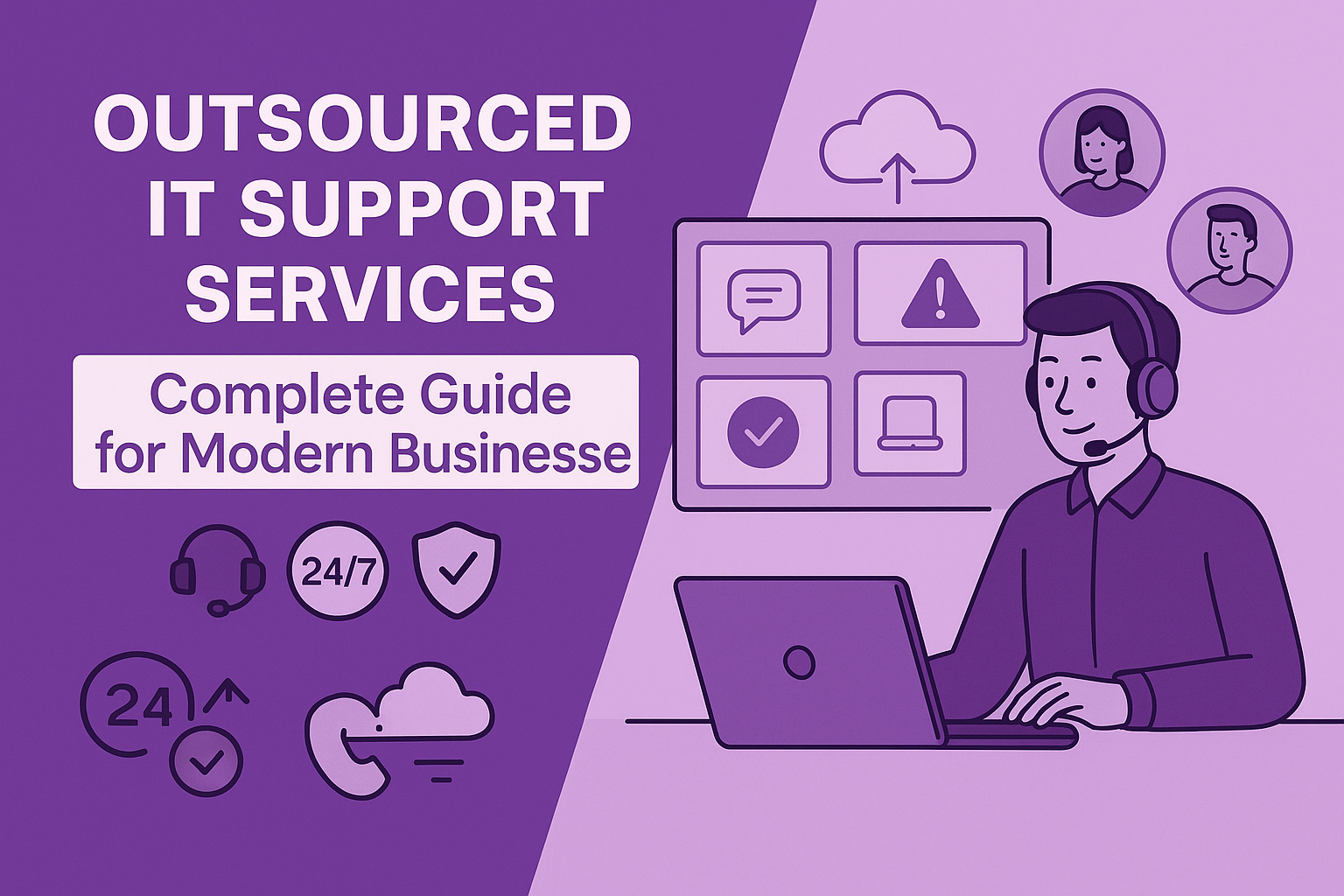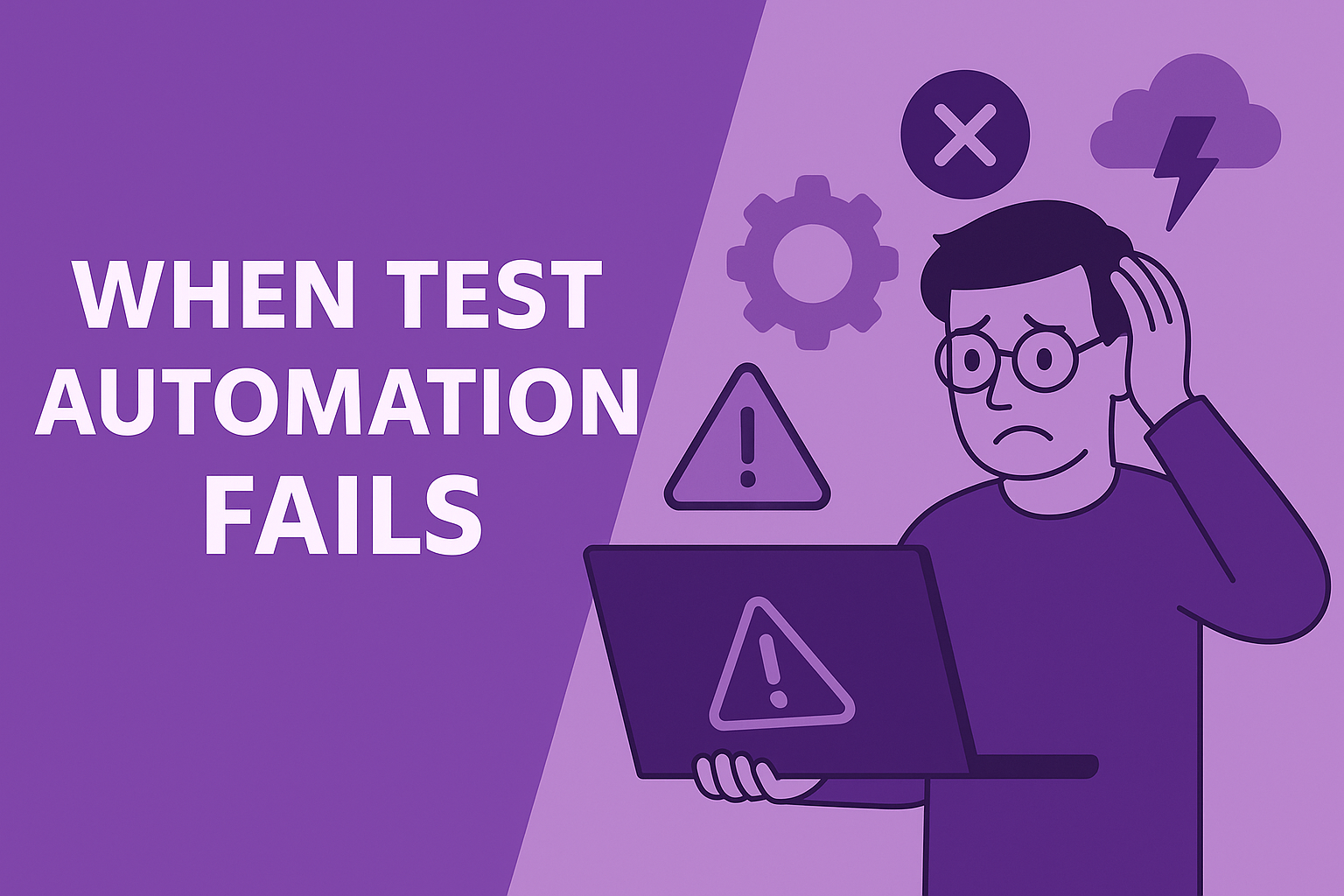What Are Outsourced IT Support Services?
Outsourced IT support services represent a comprehensive partnership model where external providers assume responsibility for managing, monitoring, and maintaining an organization's entire IT infrastructure. Unlike traditional break-fix models or project-based engagements, modern outsourced IT support encompasses proactive monitoring, strategic planning, security management, and end-user support through dedicated teams that function as an extension of the client's business.
This service model includes several essential components that distinguish it from basic technical support or staff augmentation approaches:
Complete Infrastructure Management: Outsourced IT support services include comprehensive responsibility for server management, network administration, security implementation, and system optimization. Furthermore, providers maintain proactive monitoring systems that identify potential issues before they impact business operations.
Strategic Technology Planning: Modern outsourced IT departments develop long-term technology roadmaps aligned with business objectives, ensuring that IT investments support growth initiatives while maintaining operational efficiency. Additionally, providers offer expertise in emerging technologies and best practices that internal teams might lack.
Security and Compliance: Outsourced technical support includes robust cybersecurity measures, compliance management, and risk assessment protocols that protect business-critical data and ensure regulatory adherence across industries including healthcare, finance, and professional services.
End-User Support: Comprehensive help desk services, software troubleshooting, and user training ensure that employees can maximize productivity while minimizing technology-related downtime and frustration.
Why Businesses Choose Outsourced IT Support Services
Organizations across industries are increasingly recognizing the strategic advantages of outsourcing their IT operations to specialized providers who can deliver superior outcomes while reducing costs and complexity.
Cost Optimization and Predictable Budgeting
Outsourced IT support services typically deliver 30-50% cost reduction compared to maintaining internal IT departments. This includes substantial savings on personnel costs, infrastructure expenses, and ongoing training requirements. Additionally, organizations eliminate the need for hiring specialized technical professionals and avoid the challenges associated with staff turnover and knowledge retention.
The financial advantages extend beyond direct cost savings to include predictable monthly pricing models that enable accurate budget planning and resource allocation. Rather than dealing with unpredictable emergency repair costs and equipment replacement expenses, businesses can plan their technology investments strategically.
Access to Specialized Expertise
Professional IT support teams maintain current certifications in the latest technologies, security frameworks, and industry compliance standards. Therefore, organizations benefit from accumulated knowledge across multiple projects and domains without the investment required to build this expertise internally.
Modern outsourced IT departments include specialists in cloud architecture, cybersecurity, network engineering, and emerging technologies that would be cost-prohibitive for most organizations to employ full-time. This expertise becomes particularly valuable as businesses undergo digital transformation initiatives or implement complex technology solutions.
Enhanced Security and Compliance
Cybersecurity threats continue to evolve in sophistication and frequency, making robust security measures essential for businesses of all sizes. Outsourced IT support services include comprehensive security monitoring, threat detection, and incident response capabilities that protect against data breaches, ransomware attacks, and other cyber threats.
Furthermore, providers maintain expertise in industry-specific compliance requirements including GDPR, HIPAA, PCI-DSS, and SOX regulations. This ensures that businesses can meet their regulatory obligations without investing in specialized compliance expertise or risk management systems.
Improved System Reliability and Uptime
Proactive monitoring and maintenance protocols ensure that IT systems operate at optimal performance levels while minimizing downtime and service interruptions. Outsourced technical support teams implement redundancy measures, backup systems, and disaster recovery plans that protect business continuity.
Additionally, 24/7 monitoring capabilities enable rapid response to potential issues before they escalate into significant problems that could impact productivity or customer service delivery.
Outsourced IT Support for Different Business Sizes
The outsourcing model adapts effectively to various organizational sizes and complexity requirements, providing tailored solutions that align with specific business needs and growth trajectories.
Outsourced IT for Small Businesses
Small businesses face unique challenges in managing technology infrastructure while competing effectively in their markets. Limited budgets and resources make it difficult to attract and retain qualified IT professionals, while growing cybersecurity threats require sophisticated protection measures.
Outsourced IT services for small business provide access to enterprise-grade technology capabilities without the overhead associated with internal IT departments. This includes:
Comprehensive Help Desk Support: Professional technical support for employees experiencing software issues, hardware problems, or connectivity challenges. This ensures that productivity remains high while employees receive prompt resolution to technology-related obstacles.
Proactive System Monitoring: Continuous monitoring of servers, networks, and applications enables early detection of potential problems before they impact business operations. Small businesses benefit from the same monitoring capabilities used by large enterprises without the associated infrastructure costs.
Strategic Technology Planning: Outsourced IT departments help small businesses develop technology roadmaps that support growth objectives while optimizing costs. This includes guidance on software selection, hardware upgrades, and cloud migration strategies.
Security and Backup Management: Comprehensive cybersecurity measures protect small businesses from increasingly sophisticated threats while automated backup systems ensure data protection and business continuity.
Small businesses typically achieve the greatest return on investment from outsourced IT support services because they gain access to capabilities that would otherwise be unattainable given their resource constraints.
Mid-Market Enterprise Solutions
Mid-market organizations often struggle with the complexity of managing hybrid IT environments that include legacy systems, cloud applications, and emerging technologies. Outsourced IT support services provide the expertise and resources needed to optimize these complex environments while supporting business growth initiatives.
Key benefits for mid-market enterprises include:
Hybrid Infrastructure Management: Expert management of both on-premises and cloud-based systems ensures optimal performance while minimizing complexity and costs associated with multi-vendor environments.
Digital Transformation Support: Outsourced IT departments provide strategic guidance and technical expertise for digital transformation initiatives including cloud migration, automation implementation, and modern application development.
Advanced Security Operations: Comprehensive security operations centers (SOCs) provide 24/7 threat monitoring, incident response, and compliance management that protect against evolving cyber threats.
Scalable Service Delivery: Flexible resource allocation enables rapid scaling of IT support during growth periods or special projects without the delays associated with internal hiring and training processes.
Enterprise-Level Outsourcing
Large enterprises leverage outsourced IT support services to optimize costs while accessing specialized expertise for complex technology initiatives. This includes strategic partnerships that enable organizations to focus internal resources on core business activities while ensuring that IT operations support competitive advantage.
Enterprise outsourcing models typically include:
Multi-Location Support: Coordinated IT support across multiple geographic locations ensures consistent service delivery while optimizing regional resource allocation and compliance requirements.
Advanced Analytics and Reporting: Comprehensive performance metrics and business intelligence enable data-driven decision making while demonstrating the business value of IT investments.
Integration with Internal Teams: Seamless integration between outsourced providers and internal IT staff ensures knowledge transfer and collaborative approach to strategic
Types of Outsourced IT Support Models
Different engagement models provide flexibility in how organizations structure their outsourcing relationships based on specific requirements, existing capabilities, and long-term objectives.
Managed IT Services
Managed IT services represent the most comprehensive outsourcing model where providers assume complete responsibility for IT operations including strategy development, infrastructure management, security oversight, and end-user support. This model works best for organizations that want to completely outsource their IT function and focus internal resources on core business activities.
Key characteristics of managed IT services include:
- Fixed monthly pricing with comprehensive coverage
- Proactive monitoring and maintenance protocols
- Strategic technology planning and roadmap development
- Complete security and compliance management
- 24/7 help desk and technical support
Co-Managed IT Services
Co-managed models combine internal IT capabilities with external expertise to create hybrid support structures that optimize both cost and control. This approach enables organizations to maintain oversight of critical systems while accessing specialized expertise for complex projects or emerging technologies.
Co-managed services typically include:
- Shared responsibility for different technology domains
- Collaborative approach to strategic planning and implementation
- Flexible resource allocation based on project requirements
- Knowledge transfer between internal and external teams
Project-Based IT Support
Project-based engagements focus on specific technology initiatives such as system implementations, migrations, or security upgrades. This model provides access to specialized expertise for defined timeframes without long-term commitments.
Common project-based services include:
- Cloud migration and optimization projects
- Security assessment and implementation
- System integration and modernization
- Disaster recovery planning and testing
For organizations considering different outsourcing approaches, Bulgaria has emerged as a leading IT outsourcing destination, offering exceptional value through its skilled developer pool of 85,000+ professionals, EU regulatory compliance, and cost advantages that run 25-30% below Western European rates. The country's strategic location provides optimal timezone alignment for both European and North American businesses, while Sofia's thriving tech ecosystem hosts over 500 active technology firms, one of them is Cleverix.
Quality Assurance and Testing Services
Modern software development requires comprehensive testing strategies to ensure application quality and performance. Organizations increasingly leverage specialized QA services to accelerate development cycles while maintaining high quality standards.
Managed QA services have revolutionized how organizations approach quality assurance, shifting from traditional project-based testing to comprehensive operational responsibility models. These services typically include end-to-end testing infrastructure management, automated testing frameworks, and specialized expertise across functional, performance, and security testing domains. Organizations often achieve 40-60% cost reduction while accessing enterprise-grade testing capabilities that would be prohibitively expensive to build internally.
Implementation Strategy for Outsourced IT Support
Successful implementation of outsourced IT support services requires careful planning, clear communication, and strategic partnership development. Organizations should approach this transition systematically to ensure optimal outcomes and smooth knowledge transfer.
Assessment and Planning Phase
The implementation process begins with comprehensive assessment of current IT infrastructure, support requirements, and business objectives. This includes:
Infrastructure Audit: Detailed analysis of existing systems, applications, and network infrastructure helps identify optimization opportunities and potential challenges.
Service Level Requirement Definition: Clear specification of performance expectations, response times, and service quality metrics ensures alignment between client expectations and provider capabilities.
Risk Assessment: Identification of potential risks associated with the transition process and development of mitigation strategies to minimize business disruption.
Budget and ROI Analysis: Comprehensive financial analysis demonstrates the expected return on investment while establishing realistic budget parameters for the engagement.
Provider Selection and Evaluation
Choosing the right outsourcing partner requires careful evaluation of capabilities, experience, and cultural fit. Key selection criteria include:
Technical Expertise: Demonstrated experience in relevant technologies, industry compliance requirements, and similar business environments ensures that providers can deliver required outcomes.
Service Delivery Model: Evaluation of provider methodologies, communication protocols, and escalation procedures helps ensure compatibility with business operations and culture.
Security and Compliance Credentials: Verification of security certifications, compliance expertise, and data protection protocols protects business-critical information and regulatory standing.
Financial Stability and References: Assessment of provider financial health and client references provides confidence in long-term partnership viability.
Transition and Knowledge Transfer
Effective transition planning minimizes disruption while ensuring comprehensive knowledge transfer between internal teams and outsourcing providers:
Phased Implementation: Gradual transition of responsibilities enables thorough testing and validation while maintaining business continuity throughout the process.
Documentation and Process Transfer: Comprehensive documentation of existing systems, processes, and procedures ensures continuity and enables effective ongoing management.
Staff Training and Communication: Clear communication with internal staff about changes in support processes and contact procedures ensures smooth adoption and user satisfaction.
Performance Monitoring: Establishment of performance metrics and regular review processes ensures that service delivery meets expectations while identifying opportunities for improvement.
Emerging Trends in IT Outsourcing
The IT outsourcing landscape continues to evolve as organizations adapt to new technologies, changing business requirements, and global market conditions. Understanding these trends helps businesses make informed decisions about their outsourcing strategies.
Artificial Intelligence and Automation
AI technologies are transforming IT support operations through intelligent automation, predictive analytics, and enhanced decision-making capabilities:
Predictive Maintenance: AI-powered monitoring systems can predict potential hardware failures and system issues before they occur, enabling proactive maintenance that minimizes downtime.
Intelligent Help Desk: Chatbots and virtual assistants handle routine support requests while escalating complex issues to human specialists, improving response times and user satisfaction.
Automated Incident Response: AI systems can automatically detect and respond to certain types of security incidents and system alerts, reducing response times and improving overall security posture.
Performance Optimization: Machine learning algorithms analyze system performance patterns to identify optimization opportunities and recommend infrastructure improvements.
Edge Computing and IoT Support
The proliferation of Internet of Things (IoT) devices and edge computing requirements creates new challenges and opportunities for IT support services:
Distributed Infrastructure Management: Managing IT infrastructure across multiple edge locations requires specialized expertise and monitoring capabilities.
IoT Device Management: Comprehensive management of IoT device fleets including deployment, monitoring, security updates, and lifecycle management.
Edge Security: Specialized security measures for edge computing environments that may have limited connectivity and different threat profiles than traditional data centers.
Sustainability and Green IT
Environmental sustainability is becoming an increasingly important consideration in IT operations and outsourcing decisions:
Carbon Footprint Reduction: Optimizing IT infrastructure for energy efficiency and reduced environmental impact while maintaining performance standards.
Sustainable Data Centers: Leveraging providers with renewable energy commitments and efficient cooling systems to minimize environmental impact.
Resource Optimization: Implementing technologies and practices that reduce waste and improve resource utilization across IT operations.
Regional Considerations and Global Delivery Models
Geographic factors play important roles in outsourcing strategy, affecting everything from cost optimization to communication effectiveness and regulatory compliance.
Nearshore vs. Offshore Considerations
Organizations must balance cost savings with communication effectiveness and cultural alignment when selecting outsourcing locations:
Nearshore Advantages: Geographic proximity enables better communication, cultural alignment, and timezone compatibility while still providing cost advantages over domestic providers.
Offshore Cost Benefits: Significant cost reductions are possible through offshore outsourcing, particularly for organizations with well-defined processes and clear communication protocols.
The rise of agile nearshore development methodologies addresses critical challenges that organizations face with traditional offshore outsourcing models. By combining established agile frameworks like Scrum and Kanban with geographic proximity, teams can maintain rapid iteration cycles while ensuring cultural compatibility and communication effectiveness. This approach has proven particularly successful in Eastern European markets where technical expertise aligns with European business practices and regulatory frameworks.
Measuring Success and ROI
Effective measurement and continuous improvement are essential for maximizing the value of outsourced IT support services. Organizations should establish clear metrics and regular review processes to ensure that outsourcing relationships deliver expected outcomes.
Key Performance Indicators
System Uptime and Reliability: Monitoring system availability and performance helps ensure that IT infrastructure supports business operations effectively.
Response and Resolution Times: Tracking help desk response times and issue resolution metrics ensures that end-user support meets service level agreements.
Security Metrics: Measuring security incident frequency, response times, and resolution effectiveness helps evaluate the effectiveness of cybersecurity measures.
Cost Metrics: Regular analysis of IT costs compared to previous internal operations demonstrates return on investment and identifies optimization opportunities.
User Satisfaction: Regular surveys and feedback collection help ensure that outsourced support services meet user expectations and identify areas for improvement.
Continuous Improvement
Regular Service Reviews: Quarterly business reviews enable discussion of performance metrics, challenges, and opportunities for service enhancement.
Technology Roadmap Updates: Regular review and updating of technology roadmaps ensures that IT strategy remains aligned with business objectives and industry trends.
Process Optimization: Continuous evaluation and improvement of support processes helps optimize efficiency while maintaining service quality.
Relationship Management: Regular communication and collaboration between client and provider teams ensures strong working relationships and effective knowledge sharing.
Conclusion
Outsourced IT support services have evolved from simple cost-reduction strategies to comprehensive partnerships that enable digital transformation, enhance security, and accelerate business growth. Modern organizations leverage these services to access specialized expertise, improve operational efficiency, and focus internal resources on core business activities that drive competitive advantage.
The key to successful IT outsourcing lies in selecting the right partnership model, establishing clear performance expectations, and maintaining strategic focus on business outcomes rather than simply technical metrics. Whether organizations choose comprehensive managed services, specialized project-based engagements, or hybrid co-managed models, the emphasis should be on creating partnerships that deliver measurable business value while adapting to evolving technology requirements.
As businesses continue to face increasing technology complexity, cybersecurity threats, and pressure for digital innovation, outsourced IT support services provide the expertise, resources, and strategic guidance needed to navigate these challenges successfully. Organizations that approach IT outsourcing strategically, with clear objectives and strong partnership principles, can achieve significant competitive advantages while optimizing costs and improving operational effectiveness.
The future of IT outsourcing will continue to emphasize strategic partnership, innovation collaboration, and outcome-based service delivery. Organizations that embrace these principles while maintaining focus on business alignment and continuous improvement will be best positioned to leverage technology as a driver of growth and competitive advantage in an increasingly digital business environment.
For organizations ready to explore IT outsourcing opportunities, Cleverix's comprehensive outsourcing services provide the expertise, experience, and strategic guidance needed to achieve superior outcomes while optimizing costs and accelerating digital transformation initiatives.





